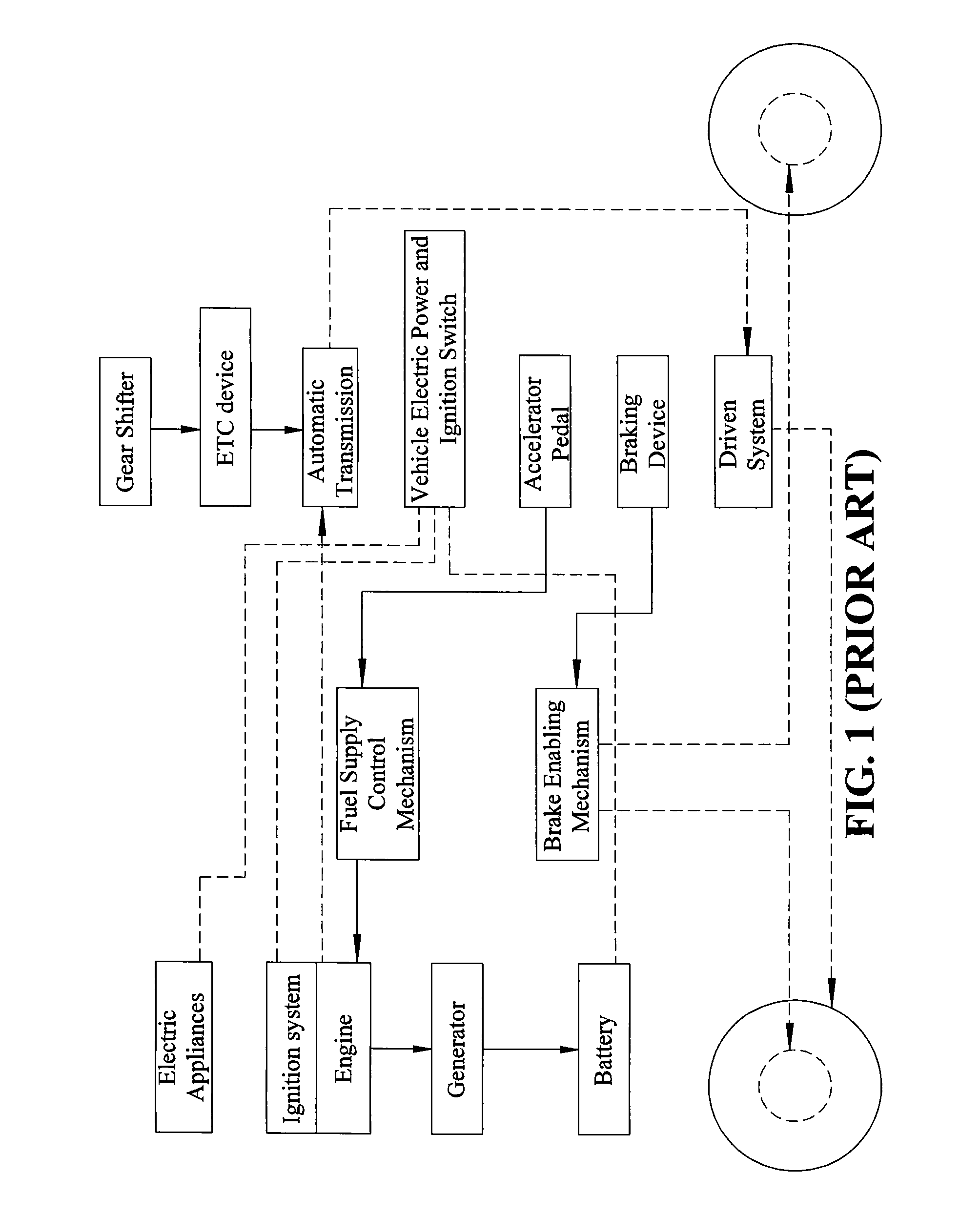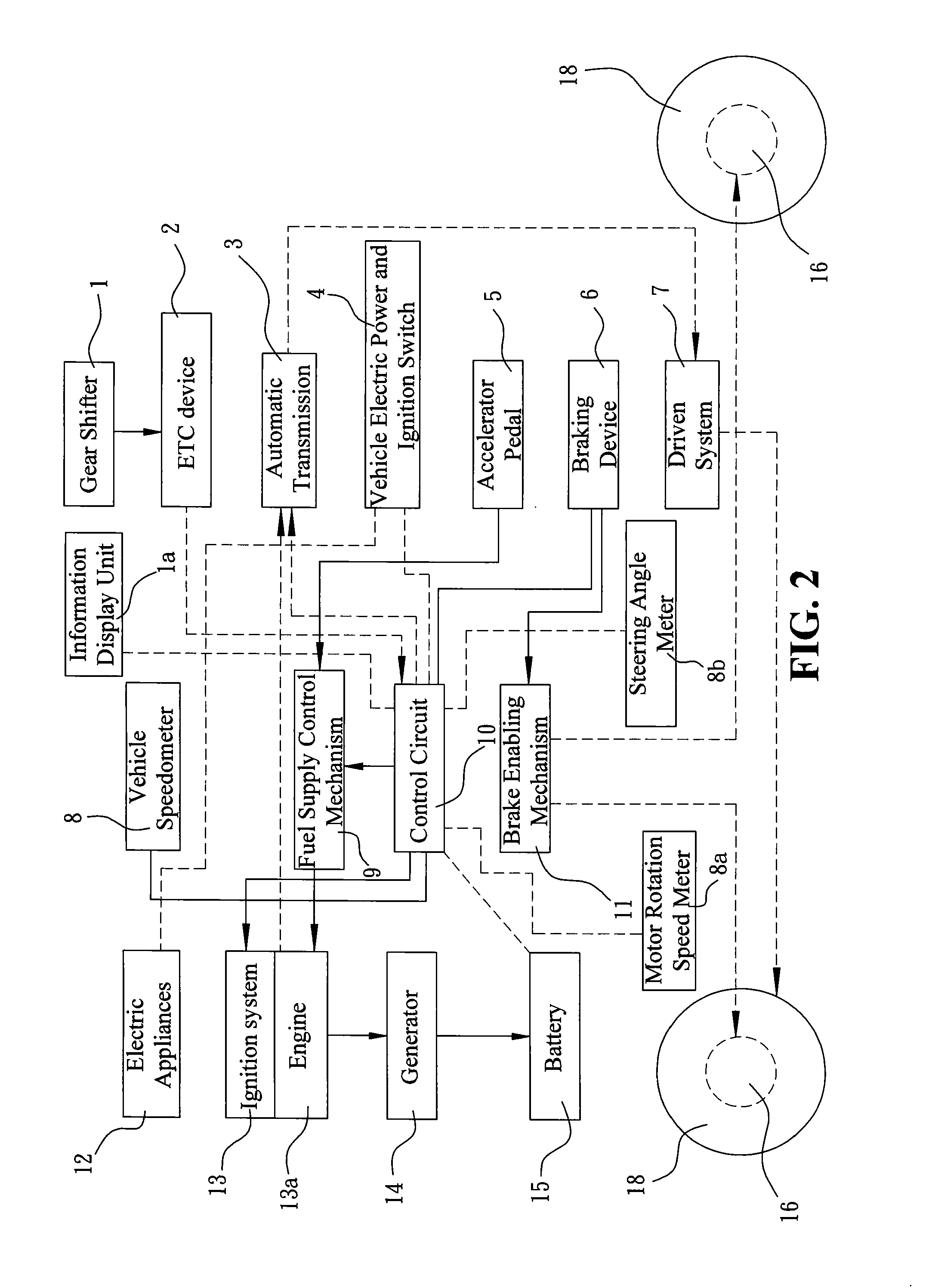Vehicle-used composite braking/accelerating system
- Summary
- Abstract
- Description
- Claims
- Application Information
AI Technical Summary
Benefits of technology
Problems solved by technology
Method used
Image
Examples
first embodiment
[0024]FIG. 2 is a schematic diagram illustrating an embodiment of the present invention. Referring to FIG. 2, there is shown a vehicle-used composite braking / accelerating system. The composite braking / accelerating system is adapted for a vehicle including an additional smart electronic transmission control (ETC) system. The smart ETC system includes an engine 13a, an ignition system 13 of the engine 13a, a generator 14, a control circuit 10, a vehicle speedometer 8, a battery 15, a fuel supply control mechanism 9, a gear shifter 1, an ETC device 2, an automatic transmission 3, a vehicle electric power and ignition switch 4, an accelerator pedal 5, a braking device 6, and a driven system 7. The control circuit 10 is electrically connected to the battery 15, the vehicle speedometer 8, the ignition system 13, the ETC device 2, the automatic transmission 3, the vehicle electric power and ignition switch 4, and the braking device 6 which is adapted for enabling a brake enabling mechanism...
third embodiment
[0031]FIG. 7 illustrates the present invention, in which the coil member and the magnetic member are restricted from rotation relative to each other. FIG. 8 illustrates the embodiment as shown in FIG. 7, while the coil member and the magnetic member are allowed to rotate relative to each other. As shown in FIGS. 7 and 8, the rotation member 17e is secured to the fixing member 17d, and the coil member 17c and the magnetic member 17b are disposed at corresponding positions of the fixing member 17d and the rotation 17e respectively. The actuator 17a is disposed on the rotation mechanism 17e, and thus the actuator 17a is allowed to rotate together with the rotation mechanism 17e. Referring to FIG. 7, when the control circuit 10 turns off the actuator 17a so as to control the actuator not to operate, the actuator 17a remains apart from the axle 182 which is rotation together with the rim 181, and thus there is no effective relative rotation can be generated between the coil member 17c an...
PUM
 Login to View More
Login to View More Abstract
Description
Claims
Application Information
 Login to View More
Login to View More - R&D
- Intellectual Property
- Life Sciences
- Materials
- Tech Scout
- Unparalleled Data Quality
- Higher Quality Content
- 60% Fewer Hallucinations
Browse by: Latest US Patents, China's latest patents, Technical Efficacy Thesaurus, Application Domain, Technology Topic, Popular Technical Reports.
© 2025 PatSnap. All rights reserved.Legal|Privacy policy|Modern Slavery Act Transparency Statement|Sitemap|About US| Contact US: help@patsnap.com



